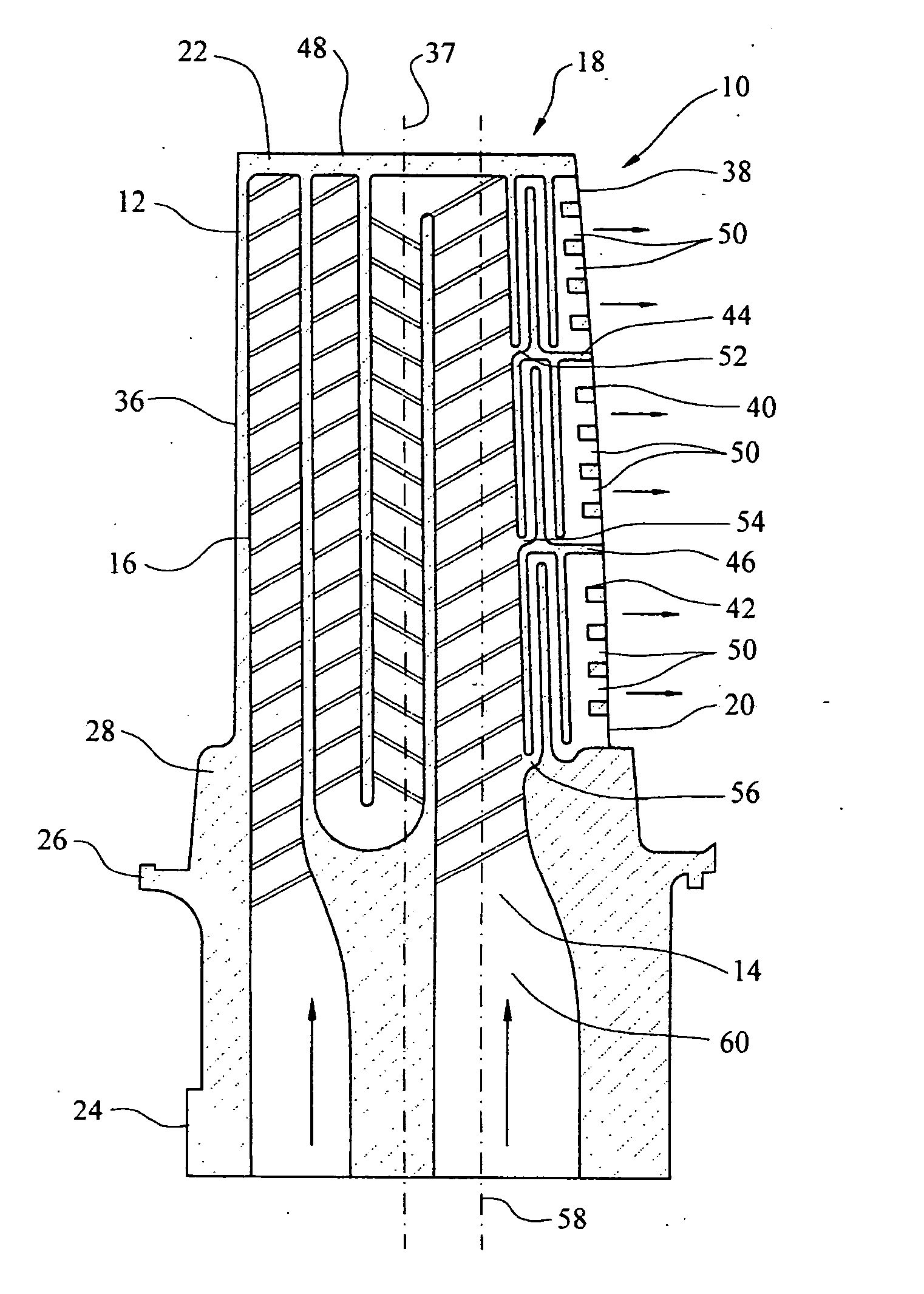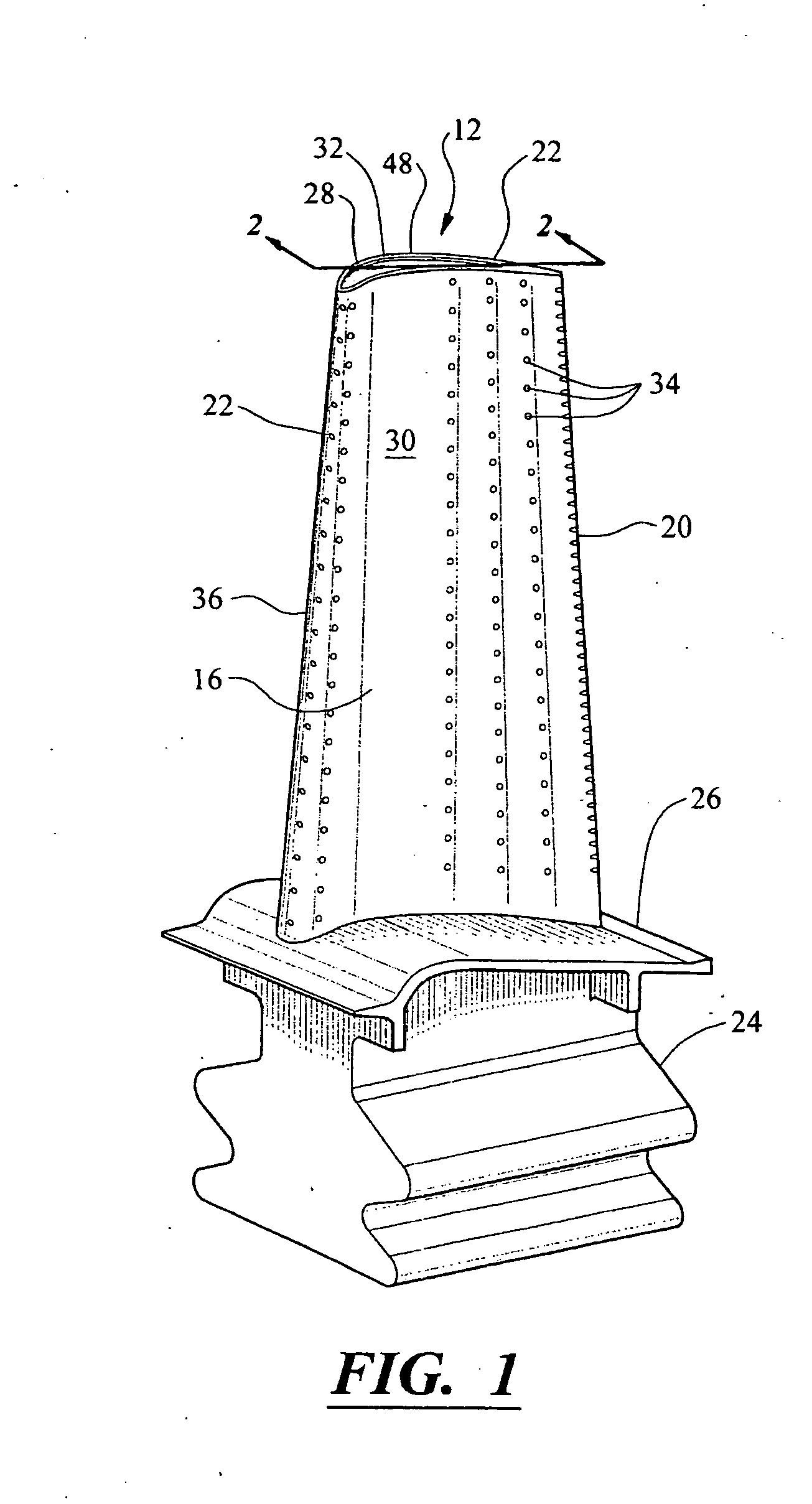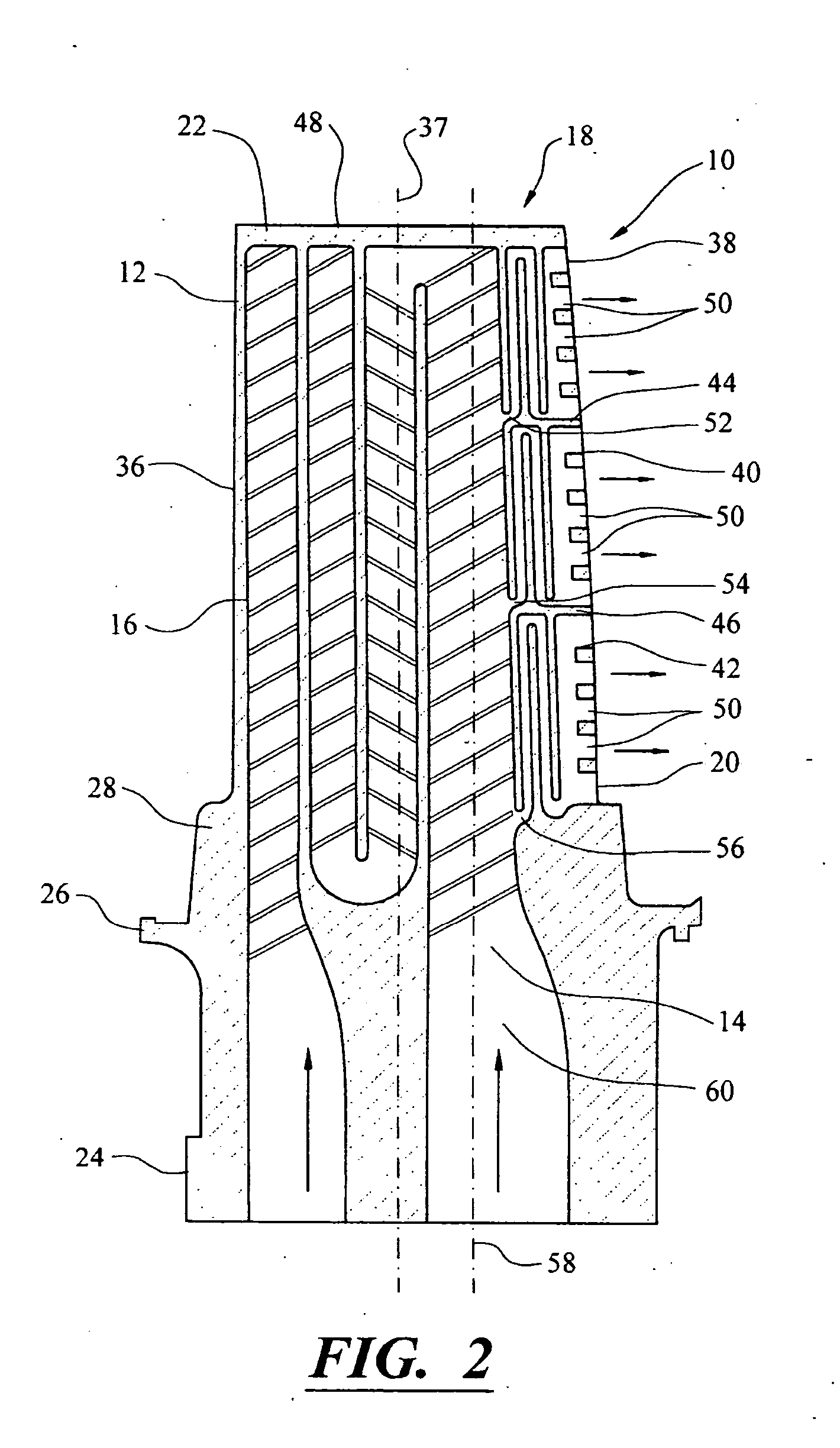Turbine blade cooling system having multiple serpentine trailing edge cooling channels
a cooling system and turbine blade technology, applied in the field of turbine blades, can solve the problems of reducing the useful life affecting the cooling efficiency so as to reduce the amount of cooling fluid flow, increase the efficiency of the cooling system of the turbine blade, and reduce the effect of heat reduction
- Summary
- Abstract
- Description
- Claims
- Application Information
AI Technical Summary
Benefits of technology
Problems solved by technology
Method used
Image
Examples
Embodiment Construction
[0020] As shown in FIGS. 1-5, this invention is directed to a turbine blade cooling system 10 for turbine blades 12 used in turbine engines. In particular, the turbine blade cooling system 10 is directed to a cooling system 10 located in a cavity 14, as shown in FIGS. 2 and 3, positioned between two or more walls 28 forming a housing 16 of the turbine blade 12. The cooling system 10 may include two or more serpentine trailing edge cooling channels 18 positioned in parallel with each other in the cooling system, as shown in FIGS. 2-5, and in close proximity to a trailing edge 20 of the blade 12 for increasing the heat removal from the blade 12 and reducing the required cooling fluid flow to achieve adequate cooling, thereby increasing the effectiveness of the cooling system 10.
[0021] As shown in FIG. 1, the turbine blade 12 may be formed from a generally elongated blade 22 coupled to a root 24 at a platform 26. Blade 22 may have an outer wall 28 adapted for use, for example, in a fi...
PUM
 Login to View More
Login to View More Abstract
Description
Claims
Application Information
 Login to View More
Login to View More - R&D
- Intellectual Property
- Life Sciences
- Materials
- Tech Scout
- Unparalleled Data Quality
- Higher Quality Content
- 60% Fewer Hallucinations
Browse by: Latest US Patents, China's latest patents, Technical Efficacy Thesaurus, Application Domain, Technology Topic, Popular Technical Reports.
© 2025 PatSnap. All rights reserved.Legal|Privacy policy|Modern Slavery Act Transparency Statement|Sitemap|About US| Contact US: help@patsnap.com



